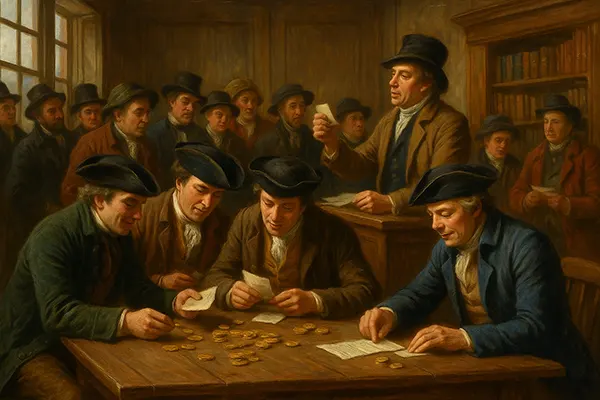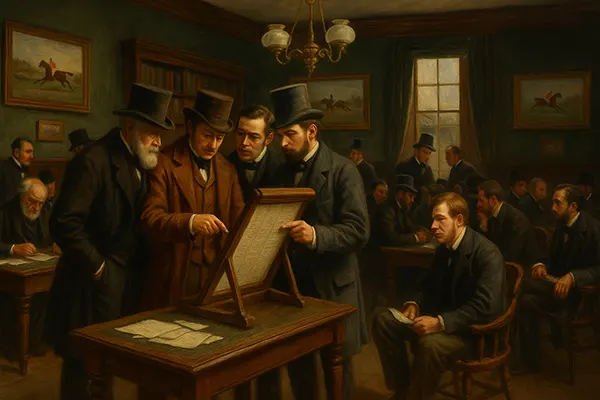History of the First Betting Clubs in Europe

The history of betting in Europe stretches back several centuries, evolving from informal wagers among friends to the establishment of the first dedicated betting clubs. These early institutions not only shaped the culture of gambling but also mirrored the political, economic, and social dynamics of their time. From aristocratic gatherings to bustling public venues, the roots of betting reveal much about how Europeans approached leisure, competition, and risk. By 2025, understanding these origins offers valuable insights into how the betting industry developed into a regulated and culturally significant sector.
The Origins of Organised Betting in Europe
The origins of organised betting can be traced to the 18th century, when horse racing became a popular pastime in Britain and France. Wealthy patrons and members of the aristocracy would gather at racecourses, not merely to watch the sport, but to engage in wagers with one another. The Jockey Club, established in 1750 in England, played a critical role in setting rules for both racing and betting, ensuring a standardised system that could be trusted by participants. This marked a turning point from casual, unregulated bets to structured events that drew spectators from across the country.
In France, the influence of horse racing and betting emerged slightly later but quickly gained momentum. Parisian high society embraced the idea of betting as both entertainment and a way to display social status. Betting clubs began forming in prestigious areas, often tied to sports clubs or gentlemen’s societies. These establishments operated privately, with strict membership rules, ensuring that betting remained an elite pursuit during its early years.
Beyond horse racing, other forms of betting emerged in Europe during the 18th and early 19th centuries. Wagering on boxing matches, fencing tournaments, and even political outcomes was not uncommon. In many cases, betting clubs acted as hubs for these activities, offering secure environments where bets could be placed and disputes resolved. This organisational framework laid the foundation for the professional betting industry that would emerge in the decades to follow.
Cultural Context of Early Betting Practices
Early betting clubs were as much about social interaction as they were about the wagers themselves. In Britain, they became an extension of gentlemen’s clubs, where the exchange of information, political discussions, and business dealings were as important as the events on which bets were placed. The betting culture reflected the values of the elite—discipline, discretion, and adherence to agreed rules.
In Central Europe, particularly in Austria and Germany, betting often intersected with traditional festivals and fairs. Wagers might be placed on local sports such as shooting competitions or horse-drawn carriage races. These events had deep cultural roots, and the betting component added excitement while strengthening community bonds. Unlike the exclusive British model, some continental betting activities were more accessible to the general public.
By embedding betting within social traditions, these early clubs ensured that gambling was not viewed solely as a vice but also as a legitimate form of entertainment. The connection between cultural heritage and betting activities helped sustain public interest, paving the way for legal recognition and eventual regulation.
Expansion and Regulation in the 19th Century
The 19th century marked a period of significant expansion for betting clubs across Europe. Industrialisation and improved transport networks made it easier for people to travel to sporting events, increasing the potential for organised betting. Horse racing remained the dominant betting sport, but greyhound racing, cycling, and football began to attract wagers as well. This diversification broadened the appeal of betting clubs beyond the aristocracy, drawing in middle-class enthusiasts.
As the popularity of betting grew, so did concerns about fairness and integrity. Governments began introducing regulations to prevent fraud and ensure transparency. In the United Kingdom, the Betting Act of 1853 restricted certain forms of wagering but allowed licensed premises to operate legally. In France, the Pari Mutuel system was introduced in 1891, creating a state-controlled betting framework that is still influential today.
These regulatory changes had a profound effect on betting clubs. Many adapted by formalising their operations, keeping meticulous records, and working closely with authorities to ensure compliance. This collaboration helped to legitimise betting in the public eye, reducing the stigma associated with gambling and setting the stage for a more professional industry.
Technological Influence on Betting Clubs
The late 19th century saw technological advances that transformed betting operations. The introduction of the telegraph allowed betting odds and results to be communicated rapidly across long distances, enabling nationwide wagering networks. Newspapers began publishing race results, betting tips, and odds, which further integrated betting into mainstream culture.
In some countries, mechanical totalisator machines were introduced to calculate odds automatically, increasing efficiency and transparency. This innovation reduced opportunities for manipulation and gave bettors greater confidence in the fairness of outcomes. Betting clubs that embraced these technologies gained a competitive advantage, attracting more members and increasing turnover.
These developments demonstrated how betting clubs were not static institutions but adaptive enterprises. By integrating new technologies, they ensured their survival in an era of rapid social and economic change, laying the groundwork for the betting industry of the 20th century.

Legacy and Modern Relevance
The legacy of Europe’s first betting clubs is still visible in the modern betting landscape. Many contemporary betting shops and online services retain the structured systems, odds calculations, and event-focused approach pioneered by these early institutions. The emphasis on fair play, record-keeping, and customer trust remains central to the industry’s credibility.
In the 21st century, the European Union and individual states have introduced harmonised regulations to ensure betting remains safe, transparent, and responsible. While the technology has shifted dramatically—with digital platforms replacing physical clubs for many bettors—the cultural heritage of betting as a social activity endures, particularly in events like Royal Ascot in the UK or the Prix de l’Arc de Triomphe in France.
By 2025, the history of the first betting clubs serves as a reminder that gambling has long been intertwined with Europe’s social, cultural, and economic fabric. Understanding this history provides valuable context for current debates about regulation, technology, and the role of betting in society.
Preserving the Heritage of Betting
Efforts to preserve the heritage of betting clubs have increased in recent years. Museums, historical societies, and sporting institutions have begun documenting the origins of betting, collecting artefacts such as betting slips, club ledgers, and early racing programmes. These initiatives aim to educate the public about the industry’s roots and its transformation over time.
Some historic betting venues have been restored and repurposed as cultural landmarks, offering guided tours that explore their significance in both sport and society. This preservation not only safeguards history but also supports tourism, drawing visitors interested in the cultural aspects of sport and leisure.
By maintaining these connections to the past, Europe ensures that the history of its first betting clubs continues to inform and inspire future generations. The evolution from exclusive gentlemen’s gatherings to a regulated, inclusive industry reflects broader societal shifts, underscoring how leisure activities adapt to changing cultural landscapes.
